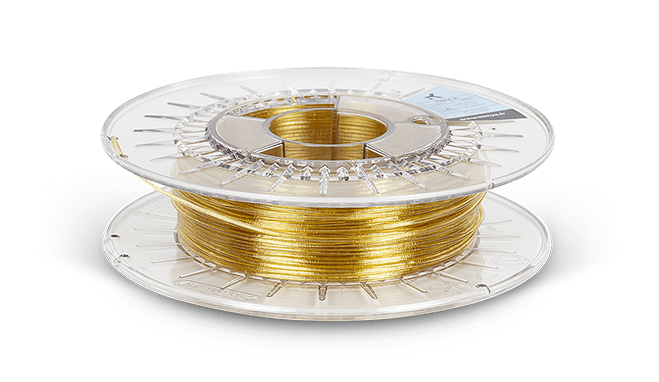3DGence Sp. z o. o. realizuje projekty dofinansowane z funduszy Unii
Europejskiej.




PEKK jest zazwyczaj drukowany i pozostawiony w stanie amorficznym. Użytkownik musi dbać o warunki jego przechowywania – PEKK jest bardzo wrażliwy na wilgoć. Ze względu na swoje wyjątkowe właściwości jest często stosowany jako zamiennik elementów wytworzonych ze stopów metali.

PEKK jest materiałem bardzo wszechstronnym: łączy w sobie odporność chemiczną, właściwości zmniejszające palność i właściwości mechaniczne, które są jednymi z najwyższych ze wszystkich znanych tworzyw termoplastycznych. Szybkość krystalizacji jest nieco niższa niż w przypadku PEEK, co znacznie ułatwia kontrolę i może prowadzić do lepszej przyczepności warstw, dzięk czemu można osiągnąć jeszcze większą wytrzymałość na rozciąganie w każdej osi w porównaniu z PEEK. Materiał ten jest jednym z najlepszych przykładów polimerów o wysokich właściwościach wytrzymałościowych.
Podczas drukowania tego materiału na drukarkach 3DGence z linii INDUSTRY można używać stosować rozpuszczalne podpory. ESM-10 jest kompatybilny z tym materiałem.

PEKK Carbon is a thermoplastic polymer reinforced with carbon fibre which gives a high level of rigidity and heat resistance. Components produced from PEKK Carbon can be exposed to acids and hydrocarbons, like fuels and lubricants, and can be used as elements of engine housings.
PEKK Carbon offers a slower crystallisation speed than PEEK, which enables transformation at lower room temperatures, offering better interlayer adhesion and less warping. Parts are produced with an improved visual finish and better mechanical properties.

PEKK-CF is a unique carbon alloy from the PAEK family. It is a pseudo amorphous semi-crystalline material with a low Ether/Ketone ratio that offers excellent thermomechanical properties. Compared to PEEK, PEKK Carbon offers slower crystallisation speed enabling transformation at lower room temperatures, both plate and nozzle, offering better interlayer adhesion and less warping. The print process is easier to set up as well.
PEKK-CF also offers a high level of resistance to UV and high temperatures, in addition to excellent chemical resistance superior even to PEI. Heat deflection temperature is of 150°C. It features UL94 V0 flame retardance capability which is inherent for this material grade. PEKK-CF has a high dielectric stability, thus can be used as an insulator or electrical appliances housing material.
The use of an industrial 3D printer allows easily replacing the grinder's side handle in case of damage of the original.
3D printing is a quick method to get custom items. Tablet car mount was made with ABS, the same material as the dashboard, to maintain a similar design.
The prototype made with ULTEM™ was used for functional laboratory tests.
3D printing is a quick method to get custom items. 3DGence engineer made from reinforced material such as PA-CF a server casing.
In record time – only 5 days of printing, 3DGence engineers built a 120 kg robotic arm with great repeatability of movement. It has six degrees of freedom and can easily manipulate other objects.
The implementation of 3D printing inside the company has a number of benefits. With this technology, Balluff’s engineers can design completely new assembly elements, that are extension of a ready company solution.
Pomożemy w doborze odpowiedniego materiału